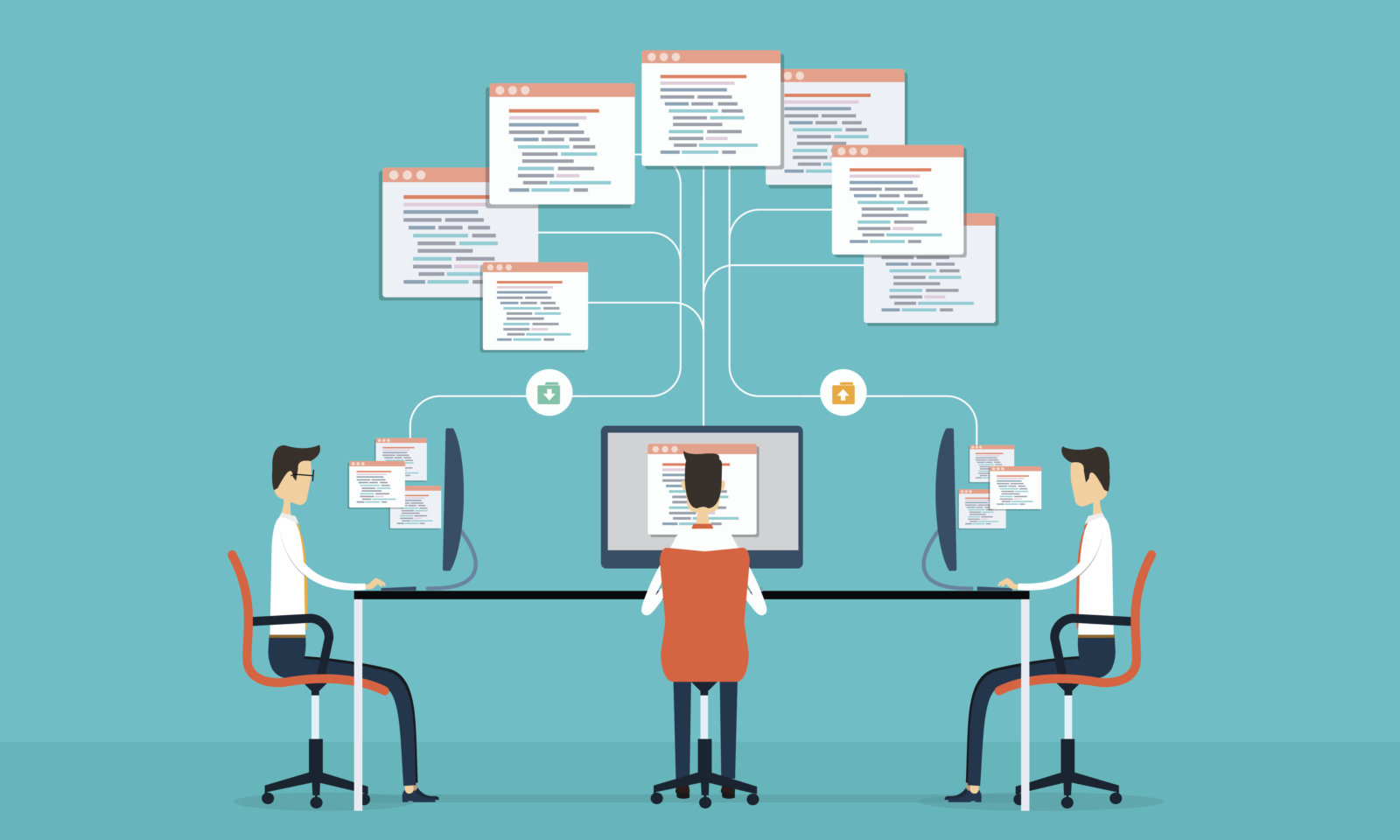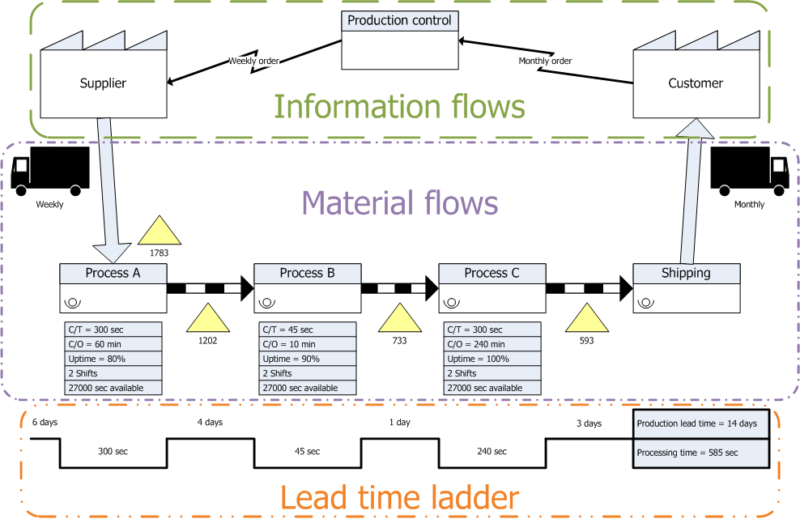
Depending on your background, you might have different ideas when you hear the term value stream mapping. In manufacturing, value stream mapping refers to analyzing the current state of the processes through which inputs become outputs. The “product” of a value stream mapping activity in manufacturing is a living map that uses symbols and arrows to visualize the flow of materials and information through the organization. It visualizes active and inactive times, handoffs, and more.

The nature of value stream mapping in software development varies slightly, because the inputs and outputs are not tangible goods, but rather, pieces of deployable value created by knowledge workers. Thus, value stream mapping for software development varies in the way it’s utilized as well.
What remains consistent is the ultimate goal of any value stream mapping activity, regardless of industry: To get a clear understanding of how value flows through the various functions of an organization. Armed with this knowledge, organizations can begin to optimize their activities and processes on a macro-level, and make changes that have a serious impact on overall productivity and value delivered. In this way, value stream mapping can help organizations create the blueprint for their Lean transformation.
Read to learn how value stream mapping can help your software development organization optimize its processes for speed and value delivery.
UNDERSTANDING LEAN VALUE STREAM MAPPING
Very rarely do organizations follow a pre-designed blueprint – in fact, to do this would hardly be Lean. Lean organizations grow in various directions and functions as they respond to market demands. During phases of intense growth, a lot of waste is introduced by way of duplicate effort, inefficient processes, and legacy systems.
The Lean world has readily embraced value stream mapping as a systematic method to remove this waste, while continually optimizing for value delivery. The goal of any Lean transformation is to improve the overall health of the organization, by emphasizing clarity, simplicity, process focus, and data-driven decision making. Lean value stream mapping allows organizations to understand exactly how value flows through their various functions, and then make decisions that will enable them to better serve their customers. They do this by removing waste, but also, by using insights gained from value stream mapping to add more value.
Value stream mapping is an incredibly valuable tool for any organization undergoing a Lean transformation, because it provides high-level insights into organizational efficiency that are difficult to uncover without a concerted effort.
HOW TO USE VALUE STREAM MAPPING IN SOFTWARE DEVELOPMENT
Although the inputs and outputs of manufacturers vs. software development organizations vary, they’re more similar than you may realize. Much like manufacturing, software development involves following a predictable series of steps to transform raw materials into a finished (or iterated version of a) product. There is a planning process, followed by execution, testing, deployment, and measurement. Often, there’s also an element of product maintenance involved post-release.
While in manufacturing, goods tend to move in a linear path down the assembly line, in software development, processes are often far messier, because the majority of work is done instead people’s heads – not on a physical line.
While conceptually, the steps in our processes are simple to understand, in practice, work often jumps between steps, gets stuck in handoffs, or otherwise sits idle, wreaking havoc on our ability to deliver work quickly or predictably. This is why it’s valuable to not only identify each step in our process (through value stream mapping), but visualize and manage our work as it moves through that process. Many software development organizations use Kanban to manage and optimize their workflows after undergoing a value stream mapping activity.
Using Kanban can help dev teams actively manage their process and gain valuable insights like:
- How long does our QA step generally take?
- What’s our average lead time? How can we improve it?
- Where does work get “stuck” in our process?
- Do we need another person to alleviate the bottleneck in this particular step?
Lean value stream mapping for software development is typically conducted across an organization. Kanban is most effective when implemented at both the team and organizational levels – so teams can optimize their workflows, while providing insights for executives at the organizational level. Kanban boards can represent any portion of the value stream at any level – giving everyone in the organization the view they need to make more informed decisions and keep value moving.




